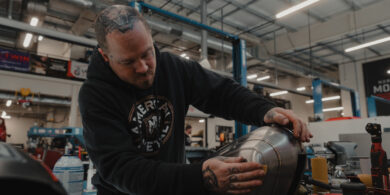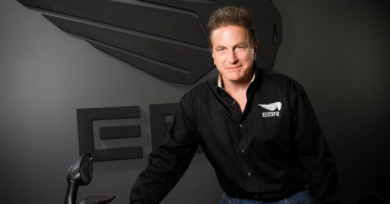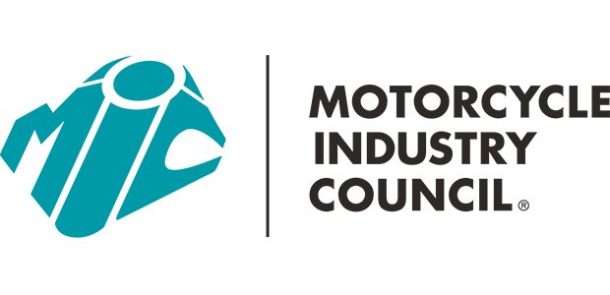March 13, 2006 – Short Block Technologies adds four-strokes, new Web site
Florida-based Short Block Technologies, one of the industry’s leading re-manufacturer of two-stroke personal watercraft engines, recently added four-stroke offerings to its product mix.
Complete with either a one or two-year, “no fault” warranty, SBT’s engines sell for roughly a third of the price of a replacement four-stroke from any of the OEMs.
“Four-strokes have been the focus of our R&D efforts for about two and a half years now,” said company founder and president Greg Pickren.
To make the transition, SBT made a substantial investment — Pickren refuses to put a number on exactly how much — in four-stroke technology and expertise, including sourcing the necessary equipment, as well as assembling a whole new list of suppliers.
“One key to the success of SBT is that we direct source all of our parts,” said Pickren. “So we had to build a whole new supplier network.”
Substantial test time also was put in at Alligator Point, the company’s private test lake.
“There’s a definite learning curve,” Pickren says. “Just because you can build a two-stroke doesn’t mean you can build a four-stroke.”
With higher initial values and far less time on the market, four-stroke parts are costing SBT substantially more than the company currently spends on comparable two-stroke components. Reportedly, most parts become available thanks to the Achilles heel of four-strokes — water intrusion.
The result of water intrusion is typically a dropped valve, and an engine that an owner thinks twice about rebuilding.
“It makes a mess of the engine because you end up destroying one or more of the pistons,” said Pickren. “Of course, the head is destroyed because you’ve dropped a valve or two that had ended up getting pounded up into the head.
“The situation is this, when they do fail due to water intrusion, it’s not an easy fix, which is good for our business.”
Mirroring the industry as a whole, Pickren sees SBT as primarily a four-stroke company in 10 years. “Of course, there’s still a fleet of over a million two-strokes that need to be serviced. So it’s a transition process,” he said. “What’s happened is that the four-strokes are expensive, and there seems to be more interest in fixing two-strokes at the moment. So our two-stroke engine sales have not declined at all. They’re still strong.”
Proven Performer
Selling remanufactured PWC engines may have appeared to be a gamble when Pickren launched SBT in 1998. Today, the company is the largest re-manufacturer of PWC engines in the industry. Last year, SBT moved more than 10,000 engines.
“I think the key to our success is the quality of the engines, the availability and the pricing,” said Pickren. “We own several thousand engines — nobody else does. We’re able to ship off the shelf; our turnaround from the time you order an engine to the time you have one is just a few days.
“That availability along with our pricing, our warranty and our quality has made it where I think we’ve changed the industry. Very few shops these days rebuild their own engines. They buy remanufactured engines from us.”
That dealer network is an important part of SBT’s strategy. Currently, the company lists about 4,000 dealers, 95 percent of which are in the United States.
The other key to the company’s success is a warranty program that can take much of the worry out of choosing an SBT product. SBT offers a choice of either a one-year or two-year warranty, both of which cover almost any type of end-user error, be it incorrect installation or simply forgetting to add oil.
“We’re in effect with our no-fault warranty providing insurance,” said Pickren, who acknowledges SBT pays off on a large number of claims. “Yes, we get a number of claims, enough so that if our competitors saw the numbers it would scare them to death. The way we think about it is it’s a great service to provide the customer. It takes the risk out of the project.
“It’s just built into our economics. In the old days, we would fight over who was right and who was wrong in a warranty, and we don’t do that anymore. You send the engine back and we send you a new one. All you have to do is call us up and say I don’t like this engine, send me another one and we do it.
“It’s one of the reasons we don’t have many competitors in this business, because you’ve got to have a certain size factory and certain economies of scale to be able to eat those costs and build it into your economics.”
Continual Challenge
While SBT would appear to be in a solid position atop the industry, the challenge to assemble the company’s bread and butter — engine cores and parts — is only becoming more and more of a hurdle to overcome.
In the early days of the company, Pickren said their in-house core buyer could fill a pickup truck and attached U-Haul trailer with parts without leaving the county. Today, that buyer is lucky to fill half a truck bed on a road tour of the Midwest.
The reason? Says Pickren, “Because we’ve bought them all.” Parts also don’t accumulate for the simple reason that many dealers are now buying remanufactured engines, rather than rebuilding them in the shop.
Still, the necessary components continue to be found. “We’ve been doing this long enough where we get the routine telephone calls,” Pickren says. “I have a crank, I have a core, what will you give me for it? We’ve been buying these long enough and selling through our 4,000 dealers that at the end of the season we get the telephone calls. ‘Here’s what I’ve got, what will you give me for it?’”
Still, engines are not the company’s sole source of income. SBT has expanded into hard parts as well, offering its own line of pistons, starters, gasket sets and carb rebuild kits, in addition to pump liners, shafts and seal kits.
“It’s more to be able to supply the dealer with one-stop shopping,” says Pickren. “We’d have the dealer on the phone and he would be asking for this stuff, and we hate saying, ‘No, you have to call somebody else.’”
The company also recently moved to beef up its Internet presence, purchasing Web site PWCToday.com.
“We wanted a stronger Web presence, and PWC Today was the largest forum on the Internet concerning PWC,” offers Pickren.
The company has invested heavily in the site, including a new server, software and site redesign. Pickren and IT guru Bryan Glynn also made the decision to offer any advertiser free banner ads as what they term an “industry service.” Currently, the site has about 16,000 members.
Back To The Future
For now, however, the focus remains primarily on maintaining the company’s leadership position in the industry, whether that be in a two or four-stroke market.
“What we like to tell a new dealer who’s thinking about whether or not he should buy from us is that we allow them to leverage their skilled mechanics,” said Pickren. “A lot of shops have one highly trained, highly skilled mechanic and a few helpers. If they buy from us, they can put one of their helpers on the job. If they’re going to rebuild it themselves, they have to use their most highly skilled technician and tie him up for hours on end, rather than jumping from ski to ski. We allow them to leverage that mechanic, and increase the volume of skis they’re moving through the shop.”
Obviously, that pitch has been successful.
“It’s funny to look back when we wrote the business plan,” Pickren said. “It’s surprisingly and amazingly accurate. We were aiming to do over 10,000 engines a year … and that’s where we’ve ended up.” psb




